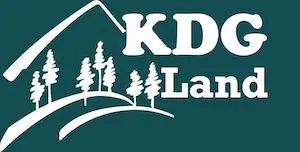
Due diligence is your final line of defense before investing in real estate. It’s the make-or-break phase where you validate everything you’ve been told — and uncover everything you haven’t. Whether you’re buying a single-family rental, a multi-unit property, or a vacant lot, due diligence ensures your investment is secure, profitable, and free from unwanted surprises.
In this guide, you’ll find a comprehensive checklist every investor should use before closing the deal.
Due Diligence Checklist for Real Estate Investors
1. Ownership & Title
☑︎ Confirm legal ownership via a preliminary title report.
☑︎ Obtain title insurance
☑︎ Order a full title search to check for:
〰️ Liens
〰️ Encumbrances
〰️ Easements
〰️ Unpaid taxes
2. Zoning & Legal Use
☑︎ Verify current zoning designation and permitted uses.
☑︎ Confirm the structure is legally permitted and compliant.
☑︎ For vacant land: check for buildability, setbacks, and zoning restrictions.
3. HOA or Community Restrictions (if applicable)
☑︎ Review Covenants, Conditions & Restrictions (CC&Rs).
☑︎ Understand rules on rentals, renovations, and parking.
☑︎ Review HOA financials and fee schedules.
4. Physical Condition
☑︎ Hire a licensed home or building inspector.
☑︎ Consider specialty inspections (sewer scope, structural engineer, etc.)
☑︎ Evaluate:
〰️ Roof age
〰️ Foundation cracks
〰️ HVAC, plumbing, electrical systems
〰️ Mold, water damage, pest infestation
5. Environmental Factors
☑︎ Check FEMA flood zones.
☑︎ Order a Phase I Environmental Site Assessment (especially for commercial or land deals).
☑︎ Evaluate potential contamination risks (e.g., former gas stations, industrial sites).
6. Utilities and Infrastructure
☑︎ Check for public vs. private road access and any shared utility agreements.
☑︎ Confirm access to:
〰️ Water
〰️ Sewer/septic
〰️ Electricity
〰️ Gas
〰️ Internet
7. Financials & Income Verification
☑︎ Review rent rolls and tenant leases (if applicable).
☑︎ Verify income with bank statements.
☑︎ Analyze operating expenses, taxes, insurance, and maintenance costs.
☑︎Calculate Net Operating Income (NOI), Cap Rate, and Cash-on-Cash Return.
8. Market and Location Analysis
☑︎ Research neighborhood comps (sold and active).
☑︎ Evaluate school district ratings, crime stats, and walkability.
☑︎ Identify planned developments or zoning changes nearby.
9. Permits & Renovations
☑︎ Check if past renovations were permitted.
☑︎ Pull municipal records for building history.
☑︎ Confirm Certificate of Occupancy for rental units.
10. Exit Strategy & Red Flags
☑︎ Ask: “If I needed to resell this property quickly, what’s my plan?”
☑︎ Identify deal-breakers like:
〰️ Unresolvable title issues
〰️ Illegal additions
〰️ Neighborhood decline
〰️ Massive capital expense needs
Make It Repeatable: Save & Systematize
Use a digital checklist or CRM to track each property’s due diligence phase. Over time, you’ll streamline the process, reduce oversight, and scale confidently.
Final Thoughts
Great real estate investors don’t gamble — they validate. Due diligence isn’t just a process; it’s your protection. Follow this checklist, ask the hard questions, and trust the data — not the seller’s pitch.
Looking to have an in-depth conversation with someone who is an expert in this field? Look no further. Reach out to me on the contact us page and let’s talk.
 Kelly –
Kelly –
